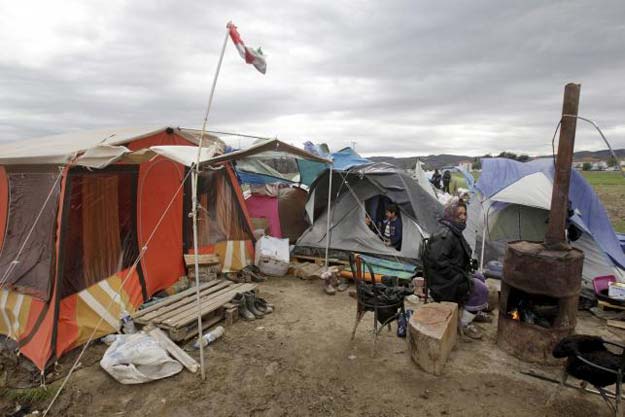
Amid unseasonably fine weather and calm seas, warnings have been sounded in recent days over the number of migrants in Libya ready to attempt the perilous Mediterranean crossing -- 500,000 according to EU foreign policy chief Federica Mogherini, while French Defence Minister Jean-Yves Le Drian puts it closer to 800,000.
Pope washes feet of Muslim migrants, says ‘we are brothers’
"In 2016, we risk having to manage a greater number of migrants than in 2015. We can pretend it's not true, but it is," said Giuseppe Sala, running as the centre-left candidate for Milan mayor.
The Italian Interior Ministry has so far registered 13,829 arrivals this year, compared with 10,075 in the same period in 2015, but it is unclear whether this marks a real increase in numbers or just an early start on movement usually seen in April.
According to Mussie Zerai, an Eritrean priest who has become a reference point for migrants in distress, there are currently "tens of thousands" of migrants waiting to disembark from Libya -- actually fewer than last year. However, there are also a large number of Eritreans in camps in Sudan, readying for the journey.
Waiting for them in open sea is a veritable armada: Italy's navy and coast guard, ships with the European anti-people trafficking operation Sophia and Frontex border control vessels. They work tirelessly to prevent shipwrecks and avoid disasters like the ones that saw 1,200 people drown over a few days in April last year.
Once picked up, the migrants are ferried to "hotspot" processing centres on the islands of Lampedusa and Sicily and in southern Italy.
The problem lies in what happens next: in 2014, only 37 percent of the 170,000 arrivals applied for asylum. In 2015, that number rose to 56 percent of the 153,000 newcomers. Many of the rest will have travelled to northern Europe.
But with the EU's distribution system for refugees not working and the closing of borders in countries along migrant routes, Italy may be forced to hold on to the majority of people landing on its shores.
Closure of the Balkan route could even see diversions to southern Italy instead of Greece, increasing numbers further.
There is an Instagram account dedicated to 'hot migrants’ and it's dividing the internet
Italy has been forced to rapidly expand its reception centre facilities: in March 2014, it was hosting 29,000 asylum seekers; by 2015 the number had risen to 67,000, and by this March 106,000.
There are currently 8,000 people in centres run by the state, 20,000 in local council-run centres and 78,000 in temporary centres run out of hotels or similar buildings by private entities which receive government funding.
Would-be refugees are often housed in the centres for up to 18 months while they apply for asylum and file appeals to rejections -- meaning they are unable to free up space for fresh arrivals.
The interior ministry declined to comment on what plans the government has to shore up an overburdened system.
"Italy has a widespread system of emergency structures supported by the regions. Reconverted hotels, former schools... we will continue to find places," Flavio di Giacomo, Italy spokesman for the International Organisation for Migration (IOM), told AFP.
The pressure has forced authorities to get creative.
In Milan, a village of prefabricated houses, built for the security team behind last year's Universal Exhibition, was chosen to shelter migrants. However an outcry from right-wing protesters has forced the authorities to find a fresh alternative.
Claudio Palomba, chairman of Italy's union of prefects, or local administrators, said that "tenders have been launched across the country for new places in reception facilities. Even in areas where local officials are opposed, my colleagues find solutions."

















COMMENTS
Comments are moderated and generally will be posted if they are on-topic and not abusive.
For more information, please see our Comments FAQ